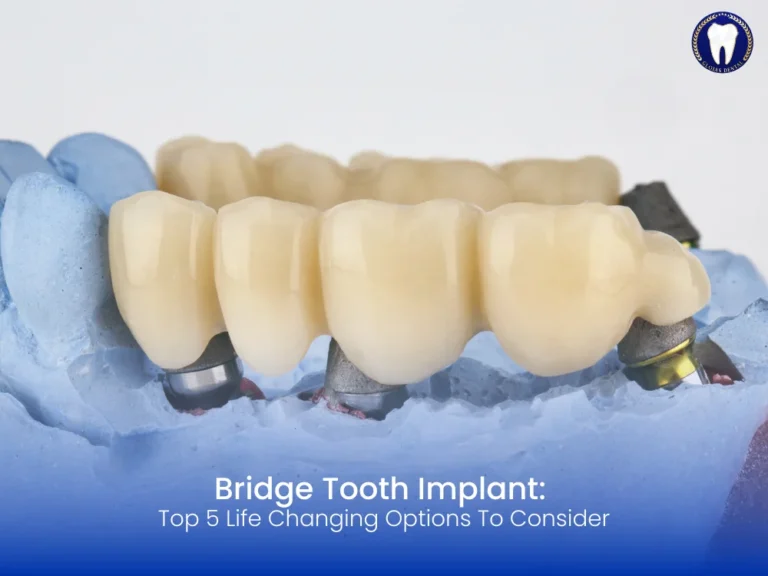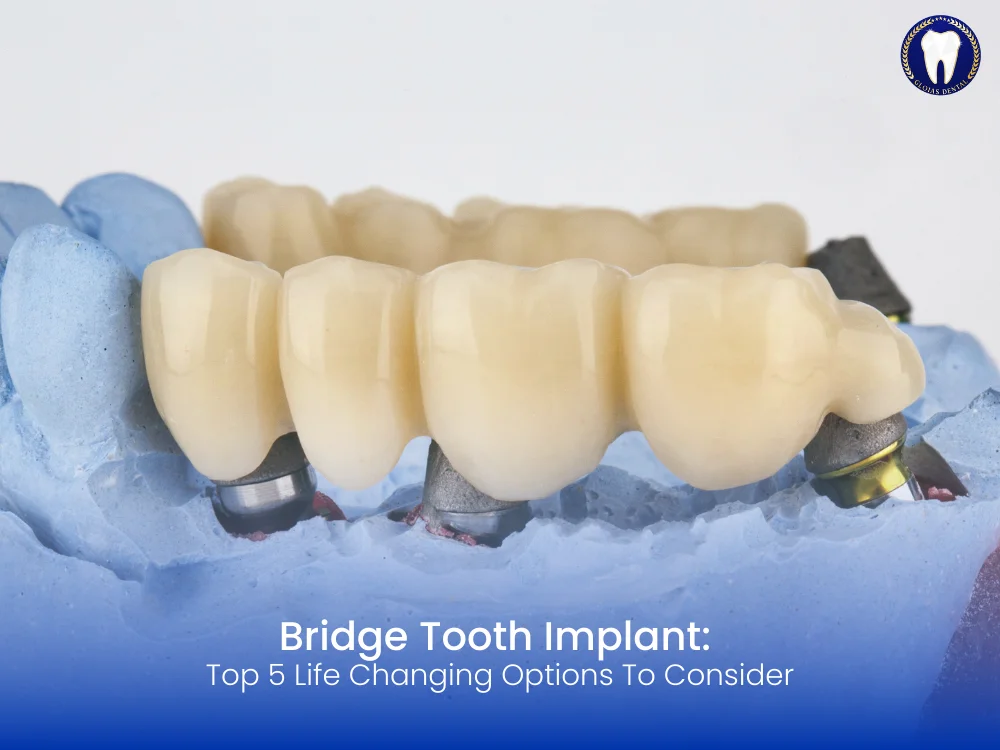Missing teeth can affect more than just your appearance—they impact speech, chewing, and even self-esteem. Thankfully, the modern solution of a bridge tooth implant is both effective and life-changing. Whether you’re missing a single tooth or several, this dental option combines the best of both worlds: the permanence of implants and the structure of bridges.
If you’re looking for a long-term, stable way to restore your smile and oral functionality, then the bridge tooth implant might just be the solution you need. In this article, we’ll explore everything from the procedure to recovery and costs.
What is a Bridge Tooth Implant?
A bridge tooth implant is a dental restoration that uses dental implants to support a bridge, replacing one or more missing teeth. Unlike traditional bridges, which rely on adjacent teeth for support, this method uses titanium posts embedded in the jawbone for enhanced stability and longevity.
How Does It Work?
- Titanium implants are surgically placed into the jawbone.
- After healing, abutments are attached to the implants.
- A dental bridge is then fixed onto these abutments.
This approach avoids overloading natural teeth and offers greater strength and durability.
Who Should Consider a Bridge Tooth Implant?
This treatment is ideal for:
- Patients missing two or more teeth in a row
- People with strong bone density
- Individuals seeking a permanent solution over dentures
- Those in good overall oral health
If you’re not a candidate for individual implants or want to avoid removable dentures, a bridge tooth implant offers a fixed, aesthetic alternative.
Benefits of Bridge Tooth Implant Treatment
Choosing a bridge tooth implant over traditional options brings several advantages:
Long-Term Durability
Dental implants are known to last for decades, making them a superior investment over time.
Improved Jawbone Health
Implants help stimulate the jawbone, preventing bone loss—a common issue with missing teeth.
Enhanced Comfort and Functionality
Since the bridge is anchored to implants, you can chew, speak, and smile with confidence.
Natural Appearance
Bridge implants are designed to mimic the look of real teeth, seamlessly blending with your natural smile.
No Need to Alter Adjacent Teeth
Unlike conventional bridges, implant-supported bridges don’t rely on grinding down healthy neighboring teeth.
Types of Bridge Tooth Implant Options
Depending on your oral condition and the number of missing teeth, several types of bridge tooth implant solutions are available.
Implant-Supported Fixed Bridge
Ideal for patients missing multiple teeth, this bridge is firmly attached to implants. It’s a non-removable solution offering strength and permanence.
Cantilever Bridge with Implant Support
This type of bridge is used when only one implant is available for support, making it suitable for less load-bearing areas of the mouth.
All-on-4 Implants
For full arch replacement, this method uses four strategically placed implants to support a full bridge, providing a quick and effective full-mouth restoration.
The Procedure: Step-by-Step Guide
Understanding the bridge tooth implant procedure can help ease your concerns:
Consultation and Planning
Your dentist performs X-rays and scans to assess bone density and create a treatment plan.
Implant Placement
Under local anesthesia, implants are placed into the jawbone. Healing takes a few months as the implant fuses with the bone (osseointegration).
Abutment Placement
Once healed, abutments (connectors) are added to the implants.
Bridge Installation
The final bridge is custom-made and fixed onto the abutments, completing the restoration.
Recovery and Aftercare
After getting a bridge tooth implant, proper care is essential for a smooth recovery:
- Avoid hard foods for the first few days
- Maintain good oral hygiene
- Use a soft-bristled toothbrush
- Attend follow-up visits
Most patients experience mild swelling and discomfort initially, which subsides in a few days.
Cost of Bridge Tooth Implant
The cost of a bridge tooth implant can vary widely based on the number of implants and your geographical location.
Component | Estimated Cost (USD) |
Implant (per unit) | $1,500–$2,500 |
Abutment | $300–$500 |
Bridge (3-unit) | $2,000–$5,000 |
Total (for 3-unit bridge) | $4,000–$8,000 |
Some insurance plans may cover a portion of the costs, especially if the procedure is deemed medically necessary.
Bridge Tooth Implant vs Traditional Bridge
Feature | Bridge Tooth Implant | Traditional Bridge |
Support | Implants in jawbone | Adjacent natural teeth |
Durability | 20+ years | 5–15 years |
Bone Preservation | Yes | No |
Aesthetic | High | Moderate |
Invasiveness | Less on natural teeth | Requires tooth reshaping |
Common Myths About Bridge Tooth Implant
Implants Are Only for the Elderly
False! Anyone with missing teeth, regardless of age, can benefit from implants.
The Procedure is Painful
Modern dentistry ensures that the procedure is minimally invasive and pain-managed.
Too Expensive to Consider
Though initially more costly, the long-term benefits and durability make it a smart investment.
FAQs About Bridge Tooth Implant
1. Is a bridge tooth implant better than dentures?
Yes, it offers a fixed, stable, and long-term solution compared to removable dentures.
2. How long does a bridge tooth implant last?
With proper care, it can last 20 years or more.
3. Can I get a bridge tooth implant if I’ve lost bone?
Yes, but you may need a bone graft before implant placement.
4. Is the procedure painful?
Most patients report minimal discomfort, managed effectively with anesthesia and medication.
5. Will insurance cover my bridge tooth implant?
Coverage varies, but some insurance plans may partially cover implant procedures.
6. How soon can I eat after the procedure?
Soft foods are recommended for the first few days, with a gradual return to a normal diet.

